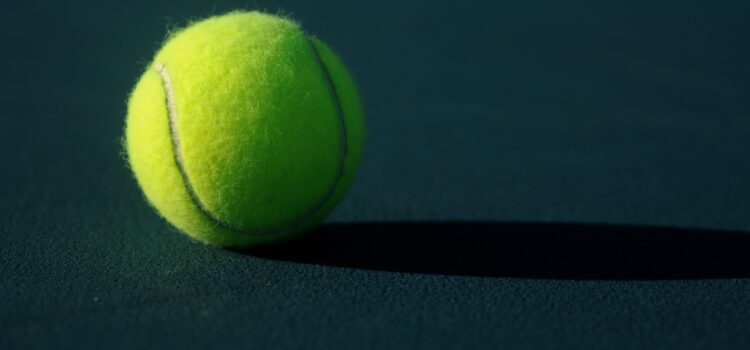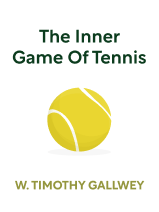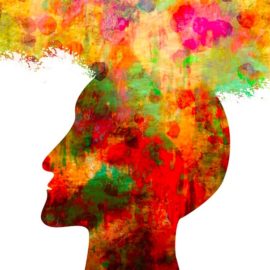

This article is an excerpt from the Shortform book guide to "The Inner Game of Tennis" by W. Timothy Gallwey. Shortform has the world's best summaries and analyses of books you should be reading.
Like this article? Sign up for a free trial here .
What is the inner self meaning? What does this mean for you as a tennis player?
The inner self in tennis is your mental space where you work on evaluating your game without being judgmental. The inner self meaning is important in tennis and can elevate you as an athlete.
Read more about the inner self, its meaning, and how it can improve your game.
Working on the Inner Self
The biggest obstacle to success on the court and off is “self-judgment.” Letting that judgment go and turning it into something more productive will improve your tennis game and your life.
The greatest successes on the court and off come from quieting Self 1, or the “ego-mind,” the part of your mind in charge of praising and chastising yourself. Great music, art, and tennis playing all come from the unconscious mind, Self 2. So how can you quiet Self 1 so Self 2 takes control?
Nonjudgmental Observation
Tennis matches involve second-by-second positive or negative judgments: frowns after poor shots, satisfaction after good ones, sometimes literally yelling at oneself. But your inner self doesn’t always respond to this.
Judgment provokes a thinking process:
- First, something is judged as good or bad: “That serve stunk.” The player then starts thinking about how to recreate the shot if it was good or how to not do it again if it was bad.
- After this, generalizations begin: After a few bad shots, “That was one bad serve” turns into “I have a bad serve,” which turns into “I’m bad at tennis,” which turns into “I’m bad in general.” These judgments are self-fulfilling.
(Shortform note: This can sometimes happen even if you’re playing well. If you’re too results conscious and you happen to get unlucky or play a more talented player than you, you can start generalizing and getting angry with yourself without reason.)
Considering your own moments of peak performance—when you did great on a test or performed an impressive athletic feat—you’ll probably notice that your mind actually wasn’t working too hard and was one with your body.
This focus without an attempt to concentrate is “childlike”: Success on the court shares a lot of similarities with the way a child picks up speech or walking from simply observing and not worrying about mistakes.
We can see this often when players are volleying at the net—the ball is coming so quickly back and forth that base instincts have to kick in. This is more difficult to achieve when players have more time to think and Self 1 has more time to take over.
Making the Mind a Mirror
There’s a difference between letting go of judgment and ignoring mistakes. If you have control over your mind, you will notice a mistake but not assign a negative value to it. You can still fix actual mechanical issues this way if you have any—notice the reason a shot is going out without labeling it “bad.” You can use this to work on your inner self.
Rather than bad, errors are part of development. A player’s tennis game improves a lot from making errors. If you notice your stroke without judgment, you can make quick adjustments to it without pressure.
The key is to have your mind act like a mirror. Reflect what happened accurately without passing judgment on what’s in front.
Example: Jack’s Backhand
Jack says he has an erratic backhand. His coach asks him what’s so bad about it. He says he brings his racket too high on the backswing and that five pros have told him this, he just can’t manage to fix it. This is slightly absurd on its face, because theoretically if he knows the problem he should be able to just bring his hands down.
Jack takes some practice swings and his swing starts down but then his hands rise right before he connects with the ball. He asks if he’s doing better, and his coach tells him his backhand is fine, it’s just changing a bit. His coach then brings him over to a mirror and asks him to practice there. For the first time, looking in the mirror, he’s able to see for himself rather than have someone tell him that he is in fact bringing his hands too high. He’s surprised and amazed by this—he had to see it for himself. He begins to change and rather than congratulate himself, he’s just surprised by how it felt.
He’s very appreciative of his coach, and his coach asks, “What did I teach you?” Jack gets confused, but he finally answers that his coach got him observing his backhand more closely than before.As soon as Jack stopped actively trying to change his swing and just watched it, he was finally able to change it.
Awareness of Positioning
This leads us to the concept of awareness, where your inner self and outer self come together. A good player should always be aware of where the ball is and where the racket head is. They should see and feel what they’re doing.
Instruction should be based around this as well: not “bring your racket lower” but “consider where your racket is right now.” If you ask where your racket should be, the coach should simply decline to answer, still asking the player to just be aware of where it is. Once again, this will lead to observing with detachment and then better results.
Note: The positive thinking that’s often found in self-help books is also often harmful because it can easily be criticism in disguise. A tennis player will compliment herself for hitting a shot well, and then she’ll feel the need to hit every shot like that one. The same problems arise.

———End of Preview———
Like what you just read? Read the rest of the world's best book summary and analysis of W. Timothy Gallwey's "The Inner Game of Tennis" at Shortform .
Here's what you'll find in our full The Inner Game of Tennis summary :
- Why tennis is actually a mind game
- How to quiet the mind and concentrate intently
- Why your self-worth shouldn't be dependent on how you do in competition






